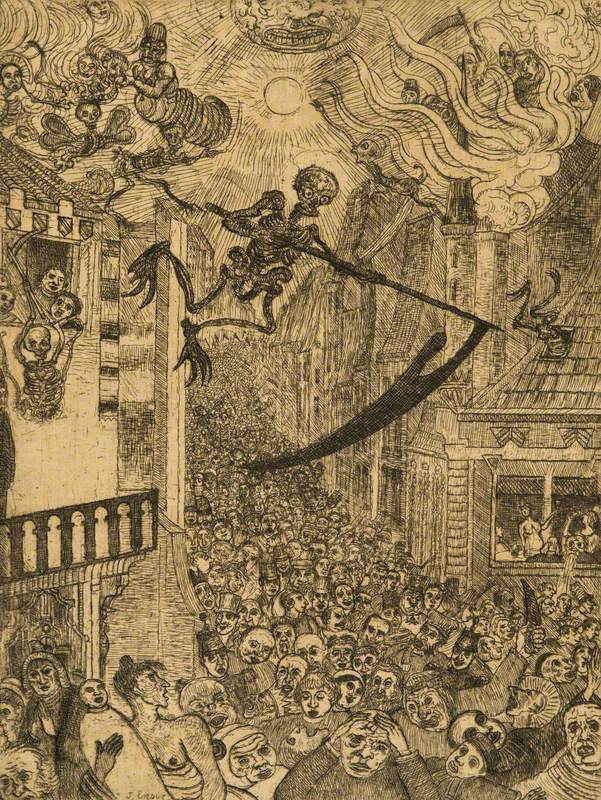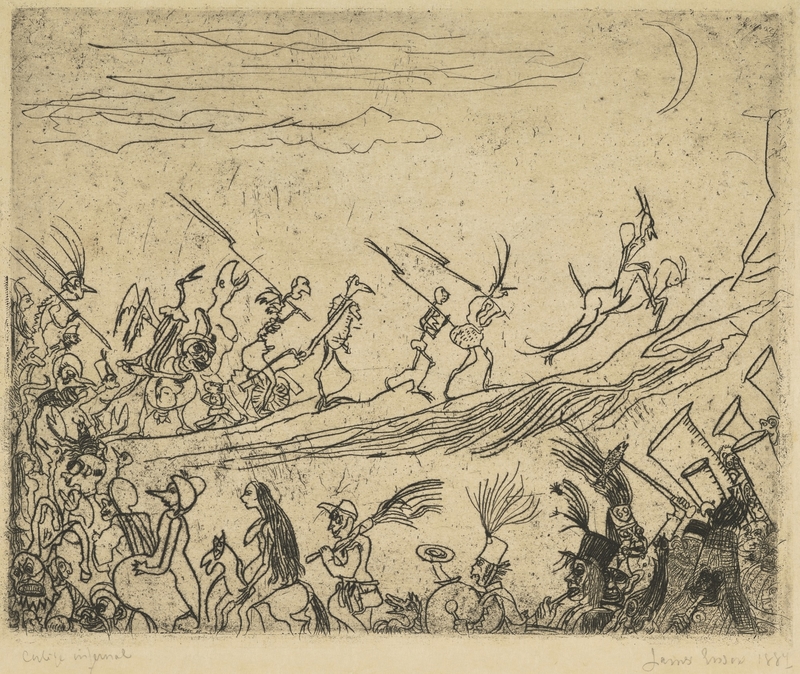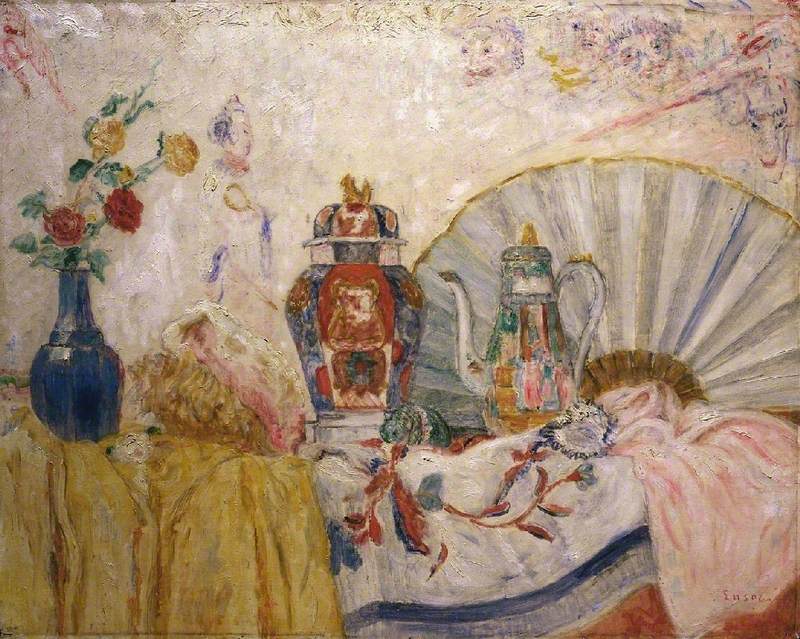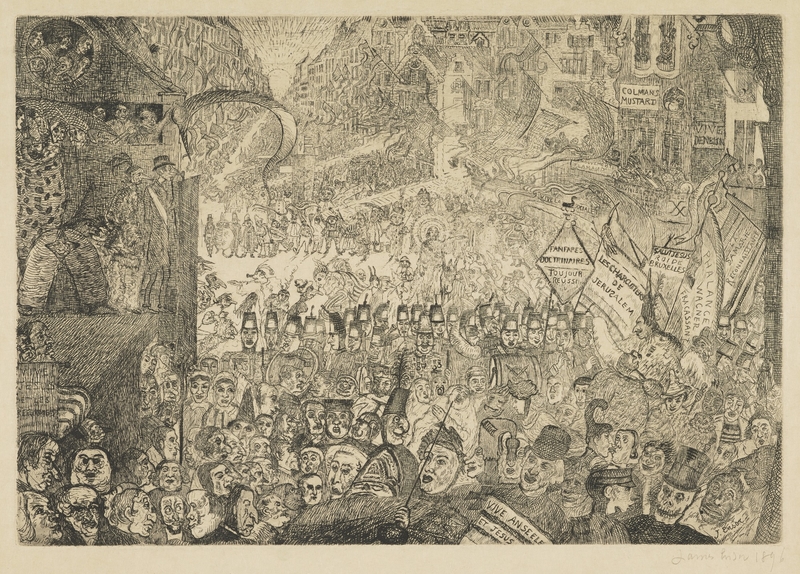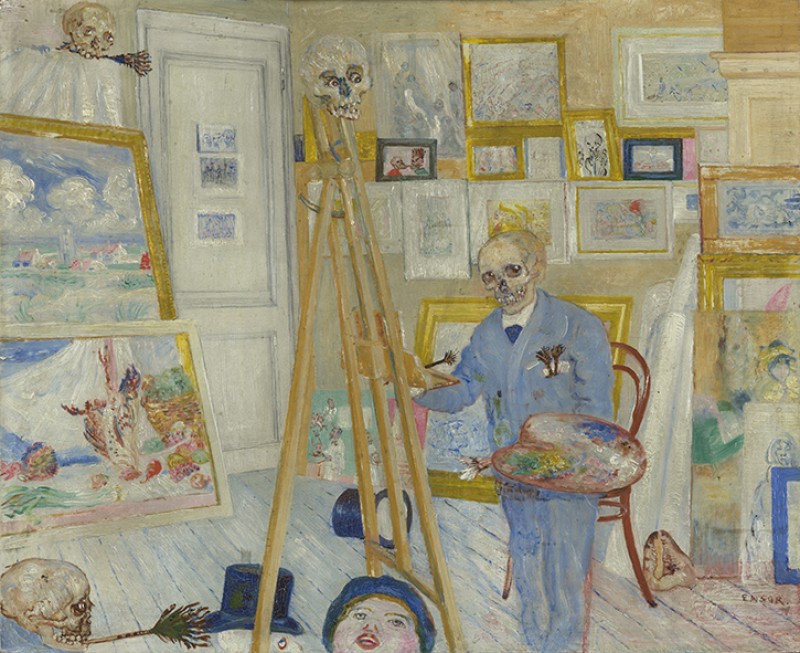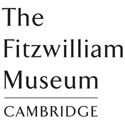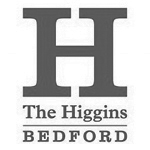(b Ostend, 13 Apr. 1860; d Ostend, 19 Nov. 1949). Belgian painter and etcher (his father was English and he had British nationality until 1929). One of the most original artists of his time, Ensor had links with Symbolism, was a major influence on Expressionism, and was claimed by the Surrealists as a forerunner, but his work defies classification within any school or group. Apart from a period studying at the Academy in Brussels, 1877–80, and a few brief trips abroad, he rarely left his home town of Ostend. where his parents kept a souvenir shop. His early works were mainly bourgeois interiors painted in a thick and vigorous technique. When several were rejected by the Salon in Brussels in 1883, Ensor joined the progressive group Les Vingt.
Read more
From about this time his subject matter changed and he began to introduce the fantastic and macabre elements that are chiefly associated with his name. He made much use of carnival masks, grotesque figures, and skeletons, his bizarre and monstrous imaginings recalling the work of his Netherlandish forebears Bosch and Bruegel. The interest in masks probably originated in his parents' shop, but he was also one of the first European artists who appreciated African art, in which they play such a great part. Through his ‘suffering, scandalized, insolent, cruel, and malicious masks’, as he called them, he portrayed life as a kind of hideous carnival. Often his work had a didactic or satirical flavour involving social and religious criticism: his most famous painting, the huge Entry of Christ into Brussels (1888, Getty Mus., Los Angeles), shows how he imagined Christ might be greeted on a new Palm Sunday. It provoked such an outburst of criticism among his associates in Les Vingt (who refused it for exhibition) that he was almost expelled from the group. From this time he became something of a recluse and his work became even more misanthropic. Nevertheless, from about the turn of the century his reputation grew rapidly, and in 1903 he was made a Knight of the Order of Leopold. The culmination of his career came in 1929, when the inaugural exhibition of the Palais des Beaux-Arts in Brussels was devoted to his work (the Entry of Christ into Brussels was shown in public for the first time) and he was created a baron by King Albert. His work changed little after about 1900, however, and he was content to repeat his favourite themes. From 1904 he also gave up printmaking (he was one of the greatest etchers of his time and also made some lithographs). There is a museum of his work in Ostend.
Text source: The Oxford Dictionary of Art and Artists (Oxford University Press)
